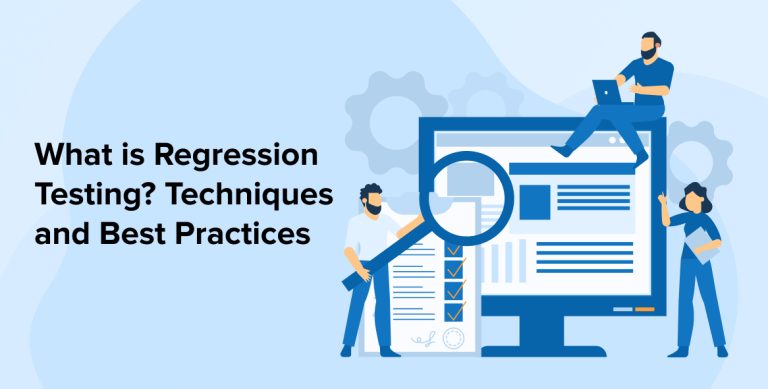
The main purpose of software testing is to find bugs and fix them in the developed application before delivering them to the clients. For this, every software testing company follows different types of software testing approaches. Regression testing is the most popular process as it enables the QA team to make sure that once the bugs are fixed in the software, no other problem arises and the software works perfectly fine. This is why regression testing is executed by software development companies while checking the application, fixing the bugs, and retesting the areas impacted by the bug fix. To get a clear idea of what is regression testing, and learn more about it, let’s go through this blog.
1. What is Regression Testing?
Regression Testing is a one of the kinds of testing techniques that ensures that a current code or program alteration has not severely damaged the earlier functionality. Regression Testing is only the execution of a whole or partial subset of already executed test cases to verify the performance of existing functionalities.
This testing is conducted to guarantee that alterations to the program do not impact the functioning. It ensures that the old software will keep working following the most current code changes and revisions.
2. When to Perform Regression Testing?
Regression Testing process is often conducted once the alterations or new features have been validated. However, it is not the everytime-scene though. Regression tests must be added into the regular testing process for the launch which will take months to process. Regression testing may be conducted for weekly updates after Functional Testing for the modifications is complete.
Regression testing is a subset of retesting. There can be any reason to perform a retest. Assume you were evaluating a particular feature and till the evening; you were incapable of finishing the test and were ordered to close the procedure without evaluating if the test was successful or not. When you return, you take the test again, which implies you are redoing a test you already took. A Retest is just a process of redoing a test and regression testing is no different.
Something within the program or code has only been modified on rare occasions. It could be programming, layout, or something that speaks for the environment’s overall architecture.
The Regression Test is a retest undertaken in the scenarios to make sure that the aforementioned modification has not affected things that were working just fine earlier.
This is often performed when new releases of the software have been generated or when problems have been resolved.

3. How to Perform Regression Testing?

There is typically no standard strategy for performing regression testing. Nonetheless, a QA analyst should be aware of various of regression testing techniques.
Step 1: Regression Test Selection
Thus, as the title indicates, certain test cases are shortlisted which may need to have retests run. You will not test the existing test suite, and the choice of test cases will rely on the source code-modified module.
These are then classified as Reusable Test Cases and Obsolete Test Cases. Reusable types would be considered for potential regression testing cycles, whereas obsolete test cases will not be considered for future software testing cycles.
Here are some tips for identifying all the test cases that may be reused:
- Are particularly prone to mistake
- Check the functioning of an application.
- Include features that people can see
- Have recently modified source code
- Have been undertaken effectively in the previous one
- Have failed previous testing phases
- Are associated with amalgamation
- Are associated with limit-value
Step 2: Determine the Time for Executing Test Cases
In this regression testing process, this stage is to determine the execution time of the specified test cases. Preparation of test data, design of regression tests by the QA team, evaluation of all test scenarios etc. are a few aspects that impact the test execution duration.
Step 3: Identify the Test Cases that can be Automated
Based on the requirements of exploratory testing, the quality assurance engineers can select at this stage which cases can be automated. Automated test cases are quicker than human testing, and similar code may be reused several times. Therefore, separate the test cases into the types such as manual test cases, and automated test cases.
Step 4: Test Cases Prioritization
Furthermore, you collect all test cases and rank them by importance, i.e. high, medium, and low. Depending on this judgment, you will perform the test cases with the highest urgency first, trailed by those with medium and low value. Priority will be determined by the product’s usefulness and user participation.
The hierarchical structure of test case prioritization is shown below:
- Priority 0: The most important test cases encompass all essential features.
- Priority 1: Features that are important but not part of the fundamental functioning.
- Priority 2: Test instances about technical complexity.
Step 5: Executing Test Cases
Lastly, it is time to conduct each test case individually and determine whether the product functions as expected. You may choose between manual testing and automated testing based on your needs. Using automated regression testing technologies such as Selenium, QTP, Watir etc. enables quicker test case execution.
You should now have a notion of how to do regression testing. Nevertheless, the issue remains: what are the most common regression testing methods? Therefore, let’s study this issue in the next part.
4. Regression Testing Methods
There are essentially four prevalent strategies:
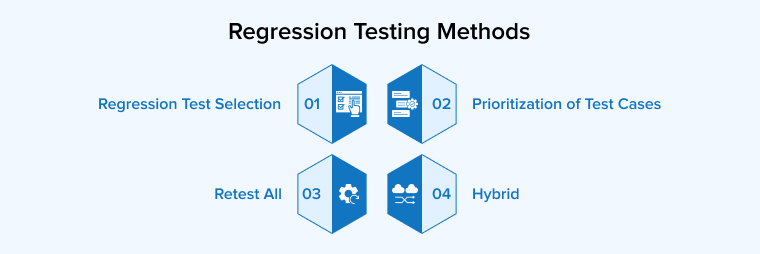
4.1 Regression Test Selection
In this method, you choose the test cases that require retesting.
4.2 Prioritization of Test Cases
In this method, you collect all of the test scenarios and prioritize each.
4.3 Retest All
In this method, you re-test the entire regression test suite.
4.4 Hybrid
In this strategy, Regression Test Selection and Test Case Prioritization are combined.
Hybrid is the most successful strategy among these options. This is due to the fact that instead of picking all necessary test cases in one go, you run them depending on whether you choose to perform any one of the first. Eventually, it saves effort and time.
Understanding the techniques is one aspect, but you also learnt how to construct an efficient regression testing set, as the procedures only pertain to that. Therefore, let’s get into these particulars in the next sections.
5. What are the Types of Regression Testing?

There are 8 main types of Regression Testing are
5.1 Corrective
Corrective regression testing is appropriate when your software’s source code has not changed. You want to verify that the present system is functioning properly, thus you will analyze the existing features and their associated test cases rather than creating new ones.
5.2 Progressive
Progressive regression testing is the optimal method for modifying testing objectives and developing new test cases. Typically, this form of software testing is chosen when introducing a new system component. This is why it enables you to confirm that modifications do not negatively impact the existing components.
5.3 Selective
In selective testing, its test scope is confined to a chosen selection of already-created test scenarios, as the title implies. Therefore, rather than retesting the entire system, only a few selected components are retested.
5.4 Partial
To assess the impact of introducing new features to the system, partial testing is conducted. For instance, if inserting a new line of programming to the source will influence existing functionality of the system. In contrast to selective testing, the new functions are evaluated beside the existing ones. This allows you to assess their impact.
5.5 Complete
This requires testing the overall structure simultaneously. Similar to acceptability testing, complete regression testing determines if the UI is damaged by the addition of one or more components. Well prior to the product’s ultimate launch, it undergoes exhaustive testing.
5.6 Retest-All
The purpose of this analysis is to re-execute every test scenario in the testing set to ensure that there are no problems introduced by a modification to a software’s source code. Opposed to other kinds of assessment, this one requires a great deal of effort and resources from the quality assurance team.
Since you are aware of the numerous regression testing solutions that the quality assurance team may perform, you can plan accordingly. Nevertheless, in the current era of automation, numerous technologies are used for regression testing.
5.7. Unit Regression
During the Unit Testing phase, analysts perform unit regression testing, throughout which they test every single unit of code independently of any other units.
5.8. Regional Regression
Testing the areas affected by a change or modification is what regional regression testing is all about. Improvements in this area are analyzed to determine if any reliable modules will be broken.
6. Regression Testing Tools
Here are the top regression testing tools that allow the execute the regression test cases automatically,
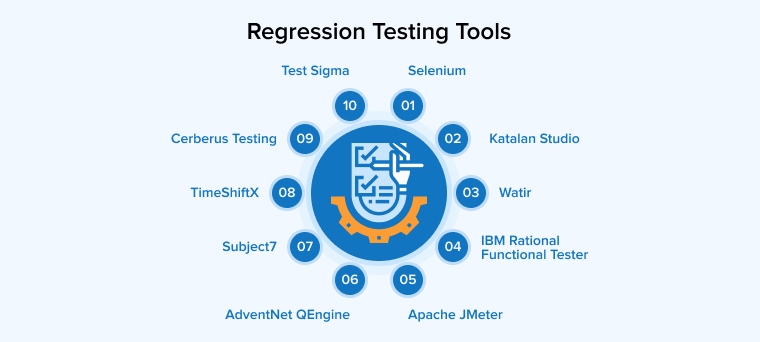
Here are the top testing tools that allow the execute the regression test cases automatically,
6.1 Selenium
Selenium is among the best automation tools for regression testing that you might have known about. Selenium is hence among the main names which may spring to mind when discussing browser-based or cross-platform regression testing. The program offers test automation scripts for sizable QA testing with experienced professionals.
6.2 Katalan Studio
Katalan Studio offers a comprehensive automated regression tests option. It seeks to simplify and facilitate the functional tests and regression testing process for beginner engineers. Katalan Studio is a one-stop shop for analyzing web services, online applications, and mobile applications. In addition to these features, the product offers reporting and sophisticated analytics.
6.3 Watir
Ruby-based Watir is an open-source regression testing tool. This application allows engineers to create regression test cases that are easily readable and comprehended. Additionally, Watir features a versatile and compact user interface. In addition to everything and because it includes innovative elements for website testing, it has become extremely popular among users.
6.4 IBM Rational Functional Tester
IBM’s Rational Functional Tester (RFT) is a testing automation tool that is used for automating regression test cases that enables several types of testing including regression, operational, statistics, etc. This technology is useful for testing several types of apps including web, .NET, Java, SAP, and emulator-based applications, among others. In addition, RFT streamlines the testing procedure for engineers worldwide.
6.5 Apache JMeter
Apache JMeter is an open-source program tool by Apache for monitoring the efficacy of test cases. The software is developed entirely in the Java computing Language. JMeter’s key functions include offering a tool for loading and efficiency tests, evaluating performance levels, and offering a client-side regression testing set.
6.6 AdventNet QEngine
AdventNet QEngine is among the most widely adopted regression testing automation solutions for online applications. The program is comprehensive, user-friendly, and simple to comprehend without the platform needs. AdventNet QEngine supports multiple platforms, allowing Windows scripts to be recorded and subsequently replayed on Linux.
6.7 Subject7
Subject7 is a corporation level, online regression testing automation platform for desktops, web, and smartphone applications. The instrument provides large-scale concurrent processing and is accessible for commercial, personal, and hybrid cloud-capable applications. Whether viewed from a technological or economic standpoint, the instrument excels in each of these categories.
6.8 TimeShiftX
TimeShiftX is among the most cutting-edge regression testing automation solutions that the Quality assurance team will adore using. This tool’s unique selling proposition assists businesses in gaining a competitive edge by shortening test cycles and decreasing resource needs. In addition, it enables companies to deliver software rapidly, which makes TimeShiftX extremely useful among reviewers.
6.9 Cerberus Testing
Cerberus Testing is another complete open-source regression testing automation solution that supports online and mobile APIs and involves far less code. The cloud-based software is simply approachable via a web browser and does not demand advanced programming abilities. This instrument is favored among engineers due to its customizable test components and testing dataset.
6.10 Test Sigma
Test Sigma is among the most acceptable regression testing tools present in the market. This tool facilitates the creation of test scenarios in plain English without the need of scripts. In particular, this tool is compatible with Jenkins, JIRA, Slack, etc. for supporting CI/CD processes. Furthermore, Test Sigma allows you to develop customized functions and set regression test case requirements.
Understanding the techniques for regression testing is only academic knowledge. You must discover the best practices for utilizing regression testing methods to achieve the appropriate results.
7. Software Regression Testing Techniques
The three most common approaches to implementing regression testing include re-testing everything, selecting only the most important regression tests, and ranking the test cases in order of importance.
7.1 Complete Regression
Here, all preexisting test suites are subjected to regression testing. Even though this is the most foolproof approach of finding and fixing every fault, it takes a lot of time and effort to implement.
For this reason, the complete regression strategy is more appropriate in some situations than in others, such as when the program is adapted for a new platform or language or when a big upgrade is released for the operating system.
You do not want to miss this! Reduce the time spent creating a suite of tests by using Parallel Testing.
7.2 Regression Test Selection
In order to do regression testing, you may pick and choose which sections are potentially impacted by the modifications. Time and energy spent on regression testing may be cut down significantly by focusing on only the connected parts of the system and running the necessary tests.
7.3 Test Case Prioritization
Regression testing should always be conducted, but you may prioritize which test cases to run first. The failure rate, business effect, and most frequently used features should be utilized to rank the importance of these test cases.
There should also be a strong emphasis on test cases that pertain to features and improvements directly related to the end user.
8. Best Practices for Regression Testing
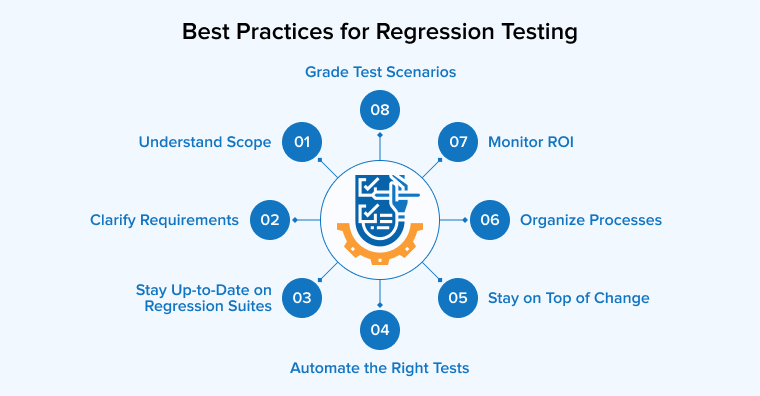
Here are the best practices of regression testing
8.1 Understand Scope
The scope, timeframe, system coverage, and goals of testing might differ. If you’re doing segment wise regression tests or entire regression test suite cycles, it’s crucial to comprehend the distinctions between these perspectives.
8.2 Clarify Requirements
To construct an effective regression testing suite, it is crucial to define what is critical to you, the business team, the users, and other partners.
You must ask yourselves the following while focusing on requirements:
- Frequency of regression testing suite executions.
- Ways to determine significant modifications.
- Timelines for achieving comprehensive regression analysis.
8.3 Stay Up-to-Date on Regression Suites
As with other forms of testing, you must keep your regression tests fully updated. Keeping both high-value practical and non-practical cases in consideration. Manage your regression test suite depending on its priority and value at all times. Ensure that your whole testing team understands which test cases hold the highest importance.
8.4 Automate the Right Tests
If a test is challenging to execute or expand, the entire cycle is at stake and you should exclude it. If a test cannot be automated, it should be seriously considered for exclusion from the regression suite.
8.5 Stay on Top of Change
Particularly in web and mobile software development, transition is continuous. This necessitates a procedure to keep track of essential updates, such as feature updates or new Agile needs.
Software capacities are another aspect of online and mobile software development that is continually evolving. Organizations must be willing to include regression testing for these sophisticated features, such as:
- Biometric verification
- Modeling network circumstances
- Locational simulation
- Image implantation, such as reading barcodes or QR codes.
- Infusion of audio or speech.
- SIM cards
- Control over all system configurations
- It is crucial for developers and testers to communicate so that modifications do not fall by the wayside.
8.6 Organize Processes
Various solutions, like CI/CD tools, are available to assist you structure and scale your regression testing procedures. However, prior to implementing CI/CD, it is essential to plan your tests; developing too rapidly might waste critical resources.
8.7 Monitor ROI
ROI is crucial. Businesses should always monitor the ROI of their operations. Ensure that the statistics generated by the regression testing tools are accessible and that you should observe the actual outcomes of test runs over a period.
8.8 Grade Test Scenarios
Evaluate and record the discrepancies between workflows and tests that are executed on various platforms. In addition, it is widely suggested to grade test scenarios in order to ensure optimal prioritization.
9. Selecting Test Cases for Regression Testing
Based on industrial data and information, it was discovered that a good number of defects reported by customers were due to last-minute bug fixes which created major side effects. Due to this reason, selecting the right test case for regression testing is an important and even challenging task. So to make it easy for you, make sure to follow the test cases as mentioned below:
- Boundary value test cases
- All Complex Test Cases
- Test cases that verify core features of the product
- A sample of Failure test cases
- Functionalities that are more visible to the users
- All Integration Test Cases
- A sample of Successful test cases
- Test cases that have frequent defects
- Test cases of Functionalities which has undergone more recent changes
10. Difference between Retesting and Regression Testing

| Re-Testing | Regression Testing |
|---|---|
| Re-testing is performed for failed test cases | Regression is performed for passed test cases |
| It includes faulty verification | It doesn’t include any faulty verification |
| You cannot perform re-testing with automation | You can perform regression tests by using automation testing. |
| This type of testing ensure that the original fault has been rectified | This type of testing checks for unexpected side effects |
| Re-testing is also known as planned testing. | Regression testing is also known as generic testing. |
11. Challenges in Regression Testing
Here are some major testing problems for performing regression testing:
- Determining the frequency of Regression Tests after every modification or after a bunch of bug fixes is a challenging task to do.
- With subsequent regression runs, test suites are likely to be large. Due to limited budget and time, the entire regression test suite is not possible to be executed
- Facilitating the test suite while gaining the highest Test coverage remains a challenge

12. Advantages of Regression Testing
Following are the several benefits of the Regression Test.
- Regression testing increases the product’s quality.
- Regression testing guarantees that any bug patches or upgrades implemented have no effect on the product’s current functioning.
- Regression testing may utilize automation techniques.
- Regression testing will guarantee that previously resolved problems do not recur.
13. Disadvantages of Regression Testing
With more advantages, there are some drawbacks too. The following are the ones:
- Regression testing must be done even for a little modification to the code, because even a minor modification to the code might cause problems with the present performance.
- If automation is not employed in the project plan for Regression testing, executing the test cases repeatedly will ask for a lengthy duration and tiresome effort.
14. Conclusion
Regression testing is essential if you wish to offer high-quality, dependable products to loyal consumers. Taking these circumstances into account, this article provides a full overview of regression testing including its classes, techniques, methodologies, and anything that you’ll want to know.
Nevertheless, if you are still interested in learning more or doing regression testing on your goods, please contact us immediately. We would be delighted to use our knowledge to help you with the testing project and improve your developmental experience easily.
FAQs
What is Regression Testing in Agile?
Ans: Agile’s commitment to continuous delivery of a stable, high-quality software product is strengthened by the practice of regression testing. It preserves the dependability and integrity of the software by checking the new code with the existing performance.
Is Regression Testing Done in UAT?
Ans: Regression testing is done before User Acceptance Testing (UAT), so the answer is yes. The final step in software testing, user acceptance testing (UAT) has nothing to do with the software’s underlying operation. Regression testing is carried out on product/application functions and enhancements.
Is Regression Testing Automatic Or Manual?
Ans: regression testing can be done both manually and automatically. However, with several presence of automated tools, it becomes easy to conduct testing. Automated regression testing saves a lot of time compared to manual efforts.
How Can We Measure the Effectiveness of Regression Testing?
Ans: The success of regression testing can be assessed through various means, including post-release error identification, analysis of test coverage, tracking software durability across multiple updates, and soliciting comments from users.
Is Regression Testing a Functional Testing?
Yes, regression testing is classified as a type of functional testing. Regression testing is a software testing technique that aims to ensure that recent modifications to the codebase have not adversely affected or compromised the pre-existing functions of a system.




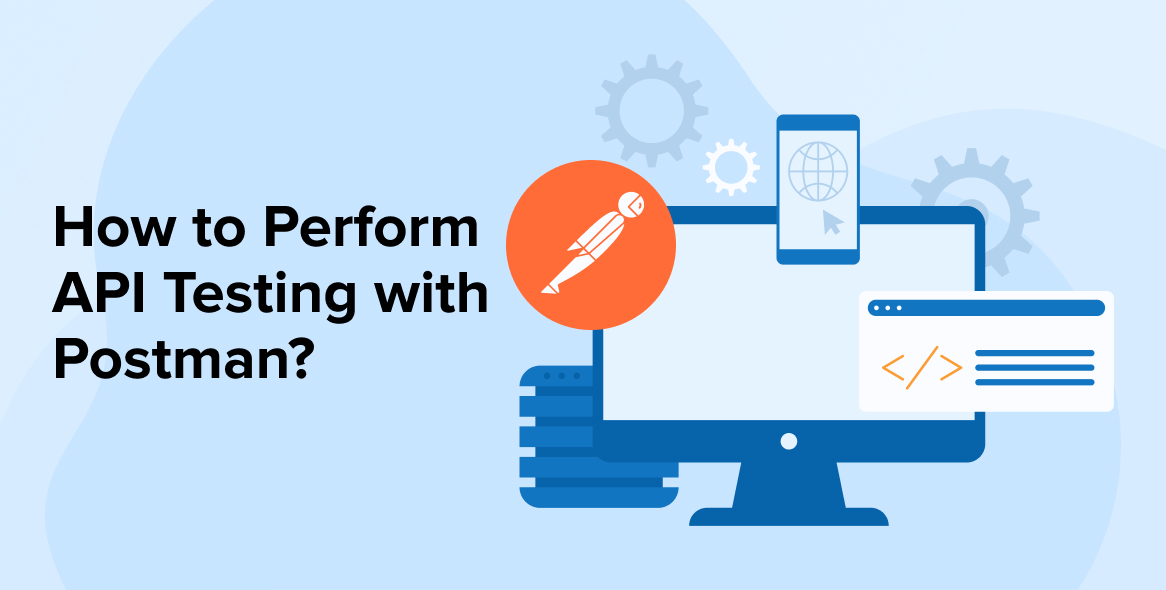

Comments
Leave a message...